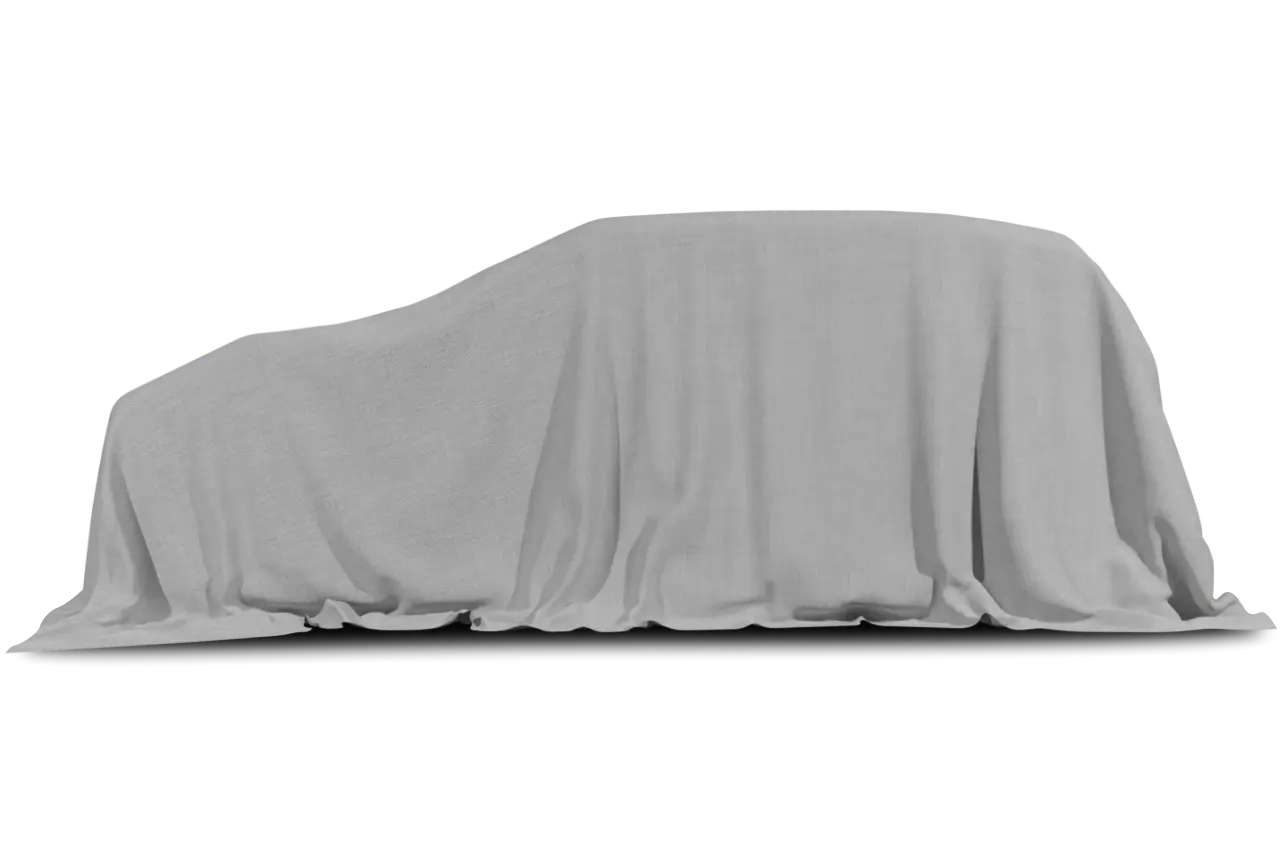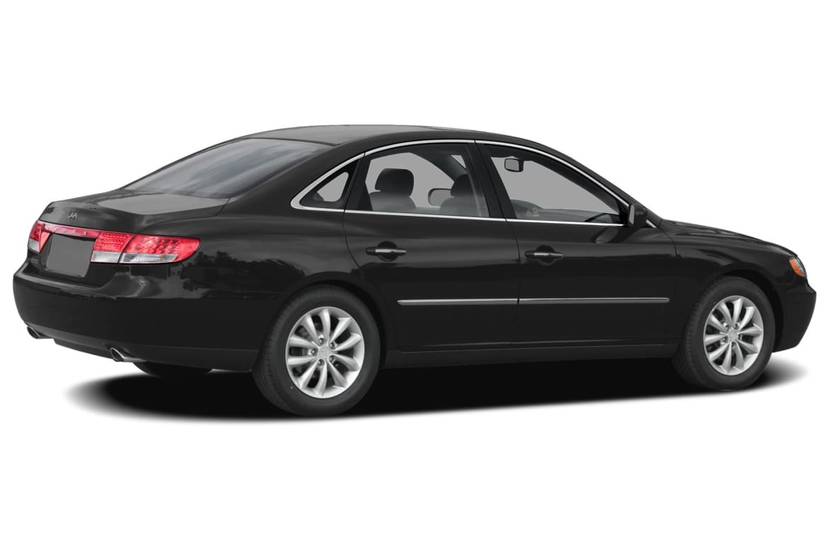
As anyone who remembers Friendster, slide rules or the Whig Party might observe, sticking to the same formula while the competition improves is a sure way to get overrun. And that’s exactly what’s happening to Hyundai’s full-size Azera sedan. Putter around in an Azera for a week and you’ll see what I mean.
The Azera offers a roomy cabin, value pricing and solid reliability, but it comes with a slew of little annoyances that leave it behind the competition.
The current-generation Azera dates back to 2006, though it received some visual and mechanical updates this year. It comes in GLS and Limited trims, both with a V-6 engine and front-wheel drive. Compare the trims here, or stack the 2011 Azera up against the 2010 model here. A six-speed automatic transmission replaces last year’s five-speed auto, and gas mileage is up about 2 mpg overall. I drove an Azera Limited.
Smiling Styling
Chief among the Azera’s styling changes is a wide, upward-creasing front air dam. It gives the car a slack-jawed grinning expression that suggests it’s about to exclaim something — perhaps, “I was inspired by a jack-o’-lantern.” The Genesis Coupe has a similar bumper opening that looks just as goofy. Other updates include new taillights and fog lights, revised headlights with LED accents, new side mirrors and a revised rear bumper.
Seventeen-inch alloy wheels are standard, with a unique design on the Limited. The Limited also gets power-folding side mirrors with integrated turn signals and puddle lamps.
The Inside
Interior changes for 2011 are minimal; most noticeable is new faux-metal console trim, which has a decent textured finish. Unlike the Toyota Avalon — whose adventurous interior struck out early on and wasn’t rectified until this year — the Azera’s cabin takes few risks. It’s traditional and elegant, and it’s aging just fine.
Cloth seats are standard. The optional pleated leather upholstery looks old-school — it emulates the seats in, of all cars, the late Cadillac Catera — but it’s generously cushioned and comfortable for the long haul. Curvy roads will have you bracing against, well, the doors or the center console, as the seats don’t have much lateral support.
By the numbers, the Azera’s headroom and legroom dimensions beat a slew of competitors — the Ford Taurus, the Avalon and Buick’s LaCrosse and Lucerne — but drivers much over 6 feet tall may want more legroom. I’m 5-foot-11, and I had the seat just an inch shy of all the way back.
Large sedans mean generous backseats, and the Azera doesn’t disappoint. Adults will have plenty of legroom and headroom, and the seat sits high enough off the ground that their knees won’t perch up in the air. Rear amenities include air conditioning vents and reading lights, but neither those lights nor the front reading lights illuminate automatically when you open the doors. Only the center dome light turns on, which is far too little illumination at night.
The annoyances persist: The window controls are straight off a mid-decade Hyundai, with one-touch up/down operation only for the driver’s window. The center armrest needs a lot more padding, and the two cupholders ahead of it employ plastic claws that clutch their contents like Freddy Krueger. I bought a sports drink in a ribbed plastic bottle, and Freddy mangled it.
Skip the optional navigation system. The unit, from electronics maker LG (Hyundai has a few other systems, too) includes handy physical map-zoom keys, but its screen is angled upward and is easily washed out in sunlight. The graphics are OK, but the system offers no traffic information or voice commands, and its point-of-interest finder couldn’t find a Radio Shack I soon drove by. (It found several others, an hour’s drive away.) Worse still, the navigation system eliminates the USB port and auxiliary MP3 jack that’s included with the base stereo. No iPods here: You’ll have to settle for the radio or the CD player.
Trunk volume is 16.6 cubic feet, which beats the Avalon (14.4 cubic feet) and LaCrosse (13.3) but falls short of the Lucerne (17.0). If trunk space is what you need, though, the Taurus’ 20.1 cubic feet beats all. A 60/40-split folding backseat is standard in the Azera — something the Lucerne and Avalon lack — but the opening is rather small, and it’s separated by a big ledge from the trunk.
Behind the Wheel
Matched to a new six-speed automatic transmission, the Azera Limited’s 283-horsepower, 3.8-liter V-6 provides plenty of power around town. On the highway, its ample low-end torque makes for easy passing maneuvers. The transmission upshifts smoothly and quickly; squeeze the gas to accelerate, and the transmission kicks down more quickly than last year’s lazy five-speed auto. Still, it’s not the most responsive operator. I took the Azera on some challenging mountain roads, and in a number of situations — particularly coming out of a downhill corner — it bogged down hunting for a gear.
On such mountain roads, the Azera doesn’t feel overly nose-heavy. But, like the Avalon, it leans hard into corners and changes course with tentative, sloppy motions. Large sedans aren’t known for sharp steering, but they are known for easy steering, and the Azera doesn’t hold up here, either. I blame the power assist. It seems like Hyundai dialed in one constant level that’s too little at low speeds and too much at high speeds. Around parking lots, the wheel feels stiff; on the highway, it feels loose. I suppose it’s about right somewhere in between, but modern variable power-steering assist should make for appropriate assist levels across a range of speeds. Hyundai says the Azera’s is variable, but the car steers like something from the 1990s.
Ride comfort in this class ranges from decent to memory-foam soft. The Azera rides comfortably enough, but you notice a lot of minor road imperfections that an Avalon would damp out entirely. (Avalon engineers must have Tempur-Pedic mattresses.) The Azera’s suspension never allows the pavement to jar things, but other cars — including Hyundai’s pricier rear-drive sedan, the Genesis — have it beat.
The Azera GLS gets a 260-hp, 3.3-liter V-6, also with a six-speed automatic. Thanks to improved airflow, the 3.3-liter V-6 is up 26 hp versus last year, while the 3.8-liter is up 20 hp. Combined EPA gas mileage is 23 mpg for the 3.3-liter GLS and 22 mpg for the 3.8-liter Limited — both a 2 mpg increase over last year’s drivetrains and competitive with the segment.
Safety, Reliability & Features
In crash tests by the Insurance Institute for Highway Safety, the Azera earned the top score, Good, in frontal crashes. The sedan received Acceptable grades in rear- and side-impact evaluations. It hasn’t undergone the IIHS’ roof-crush tests or the National Highway Traffic Safety Administration’s revamped 2011 crash tests.
Acceptable IIHS results may sound fine, but in a field where most competitors score Good, it comes as a disappointment. Standard safety features include an electronic stability system, eight airbags and antilock brakes. Click here for a full list.
Reliability for the Azera has been excellent, and Hyundai’s standard warranties — five years of comprehensive coverage and 10 years on the powertrain — are among the industry’s best. Typical for the brand, the Azera is priced to sell. With a starting price just over $25,000, it competes with the Taurus and LaCrosse but outplays both on standard features. The well-equipped Avalon, meanwhile, has ballooned to more than $30,000 to start.
Standard features on the Azera GLS include power front seats, dual-zone automatic climate control and a CD stereo with USB/iPod integration. For almost $5,000 more, the Limited adds heated leather upholstery and a moonroof (both are optional on the GLS), plus a power rear sunshade, a power tilt/telescoping steering wheel, power-folding mirrors and the larger V-6 engine. A navigation system is optional, but a few features offered elsewhere in this league — cooled front seats, heated rear seats or any sort of rear parking assist — are unavailable.
Azera in the Market
Despite its updates, the Azera has curried little popularity. Hyundai sold fewer than 2,500 of them in the 2010 calendar year through September. That’s down 17 percent from 2009, and it’s a flyspeck in this segment: Toyota sold nearly nine times as many Avalons in that same time frame, and Ford parted with 22 times as many Tauruses.
Of some consolation to Hyundai should be the fact that the hotshot new Sonata and well-appointed Genesis sedans have probably drawn a lot of would-be Azera buyers. The car offers a lot of relative value, but it needed a more serious makeover than it got, and the competition has moved ahead. Hyundai need not Whig out — the Sonata is selling at breakneck pace, after all — but it does have some work to do on the Azera.
| Send Kelsey an email |


























